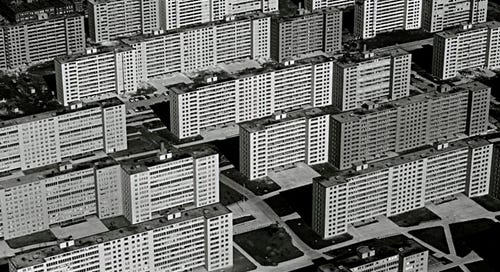Overdrawn: The Crisis of Architectural Expectation
Why We Keep Asking Buildings to Fix What Systems Have Broken
In recent decades, architecture has been cast in an ever-expanding role: it’s been the healer of the climate, solver of inequality and the restorer of communities. We are told that architecture can empower the marginalized, prevent floods, heal history’s wounds, and stitch the social fabric back together, all while expressing timeless beauty and meeting budget constraints.
This is the story we’ve built. This is the weight we’ve placed on buildings.
But architecture is not salvation. And architects are not saviours. I call this “The Crisis of Overreach.”
Architecture is not the only industry reaching too far. The world keeps asking more of it, more meaning, more healing, more spectacle, more salvation.
Institutions inflate its promises. Competitions demand utopias on impossible timelines. Clients want impact without compromise. And we, the designers, internalize it all, stretching the discipline until it frays.
We’re not just overreaching. We’re being over-asked.
Design briefs read like manifestos. Renderings are expected to tell stories of justice, climate, inclusion, and belonging, all in a single image. And we say yes. Again and again.
In doing so, we blur the line between what architecture can do, and what we wish it could.
This isn’t just a crisis of identity. It’s a crisis of expectation, a profession stretched thin by ambition, demanded miracles, and sold promises.
We don’t just draw buildings anymore. We’re tasked with redrawing the world’s systems, without permission, policy, or power. The result? An identity crisis.
You can see this kind of overreach in the Ground Zero Master Plan. After 9/11, architecture was charged with not only rebuilding a physical site but also mending national grief, restoring public confidence, and narrating resilience. The design process became entangled with emotion, politics, and symbolism, asking too much of a building, too soon. Architecture became the medium for healing a wound that required more than concrete and steel, it required time, policy, and cultural reckoning.
Architecture is trying to be everything, and in the process, forgetting what it actually is.
When we believe design alone can solve systemic injustice, we excuse other forms of responsibility. A beautiful building in a broken system becomes a distraction, not a remedy.
Take, for example, Pruitt-Igoe, the infamous public housing project in St. Louis. Designed with modernist ideals to uplift low-income Black residents, it was burdened with the impossible task of solving poverty and racial segregation through form alone. The real culprits: systemic racism, poor maintenance funding, and political neglect, were ignored. When it failed, architecture took the fall. It remains a textbook case of blaming design for deeper structural injustices.

The Danger of the Saviour Complex
We fetishize materiality while ignoring displacement.
We celebrate “green” metrics while workers go unpaid.
We insert polished new functions into old shells and call it progress.
All while the soul of the place quietly disappears.
This isn’t a failure of creativity. It’s a failure of clarity, of scope, role, and limits.
A beautiful building in a broken system becomes a distraction, not a remedy.
So let’s go back to the start.
What is architecture, really?
Architecture is the thoughtful shaping of space. It is the translation of culture into form. It is the negotiation between people, places, materials, and time. That’s not small. But I get it, it’s also not everything.
I can suggest some principles, such as:
Architecture can support justice, but it cannot replace it.
Architecture can embody sustainability, but it cannot enforce it.
Architecture can suggest belonging, but it cannot guarantee it.
This isn’t a call to shrink architecture’s relevance. It’s a call to focus its power.
When we claim more than we can deliver, we diminish the discipline itself.
We must stop treating architecture as the answer to every question. Instead, let it be a participant in a larger conversation. Let it sit humbly beside policy, education, activism, ecology, and economics. Let it amplify, not dominate.
Let’s become facilitators of the process, not authors of ideology and let’s draw with communities, not over them.
When we stop pretending to fix the world, we can finally start engaging with it, honestly, ethically, and with the humility that the present moment demands.




